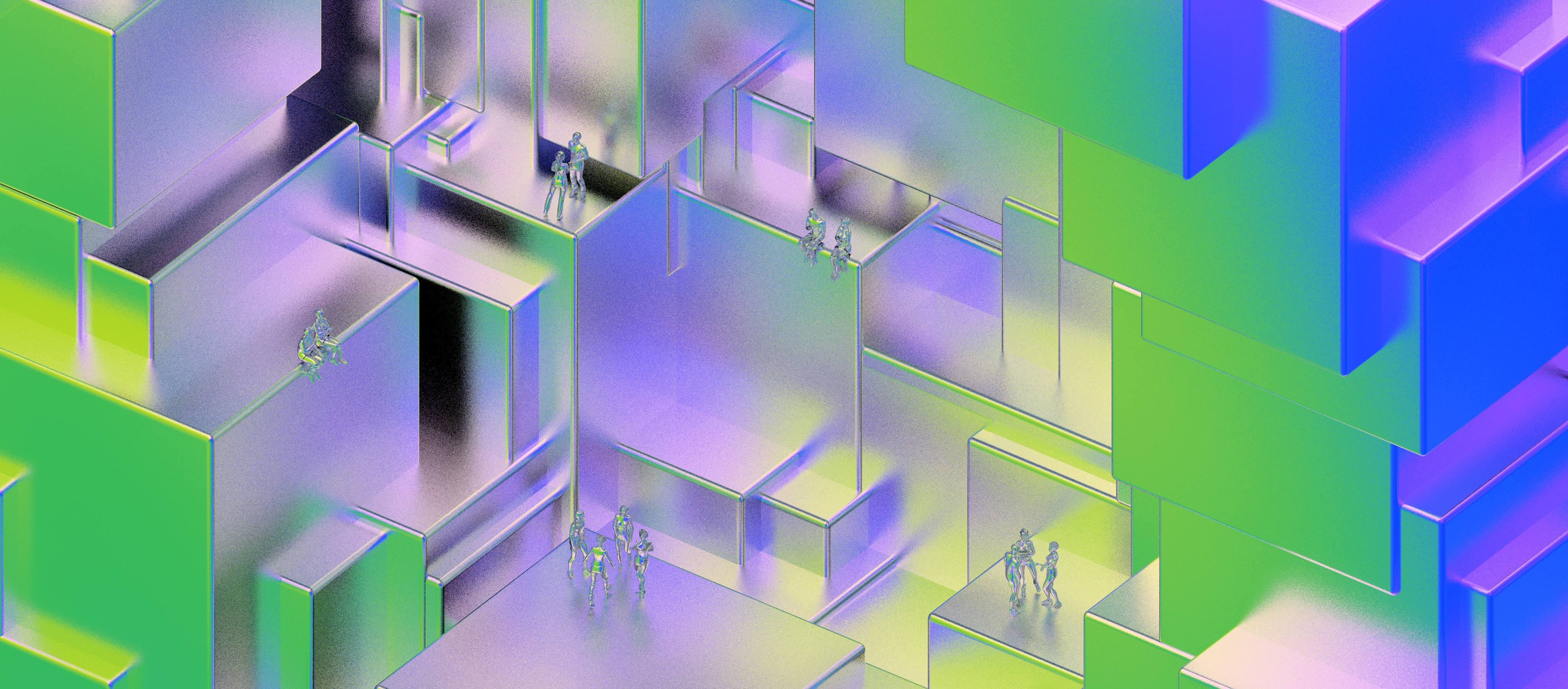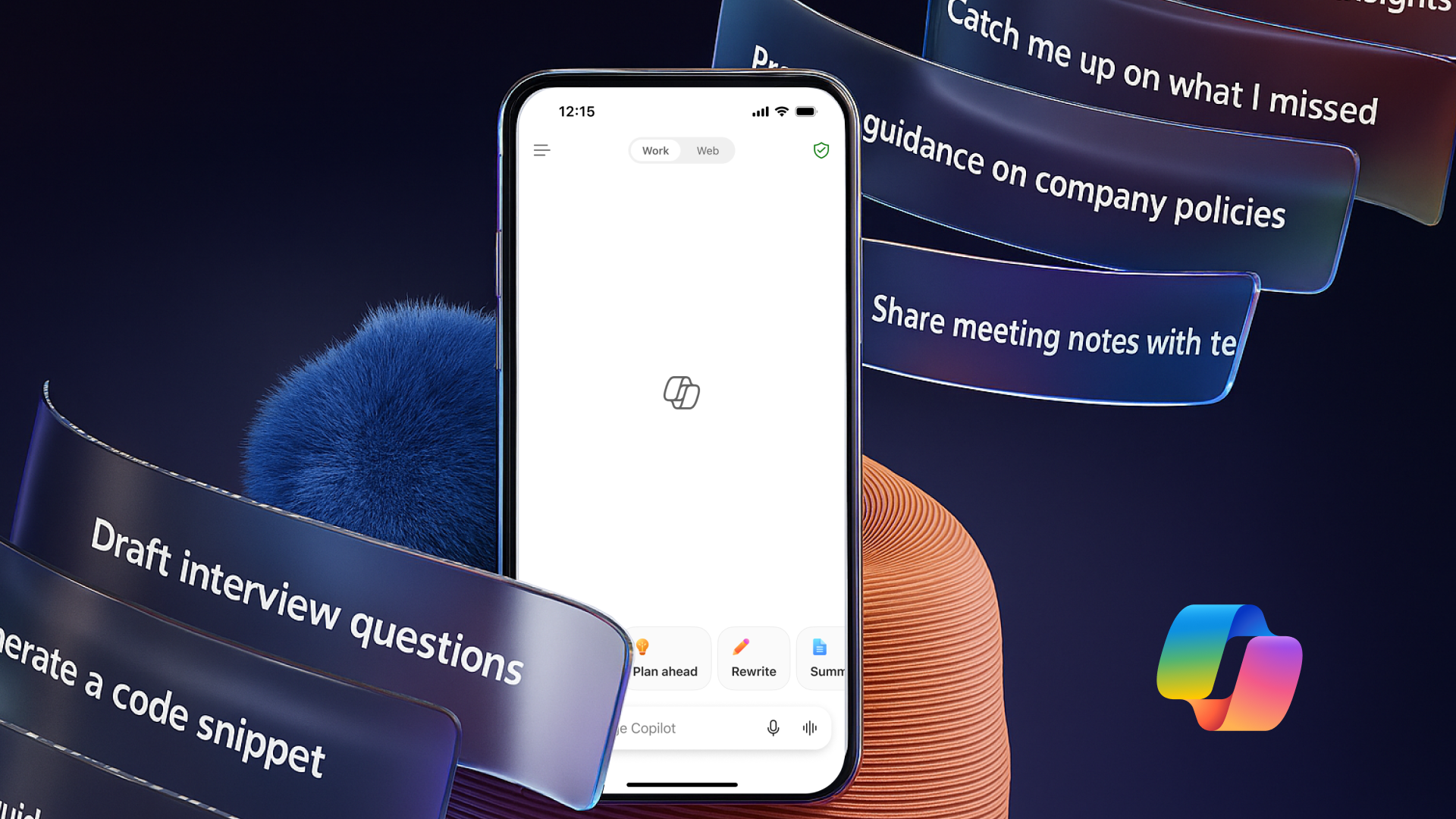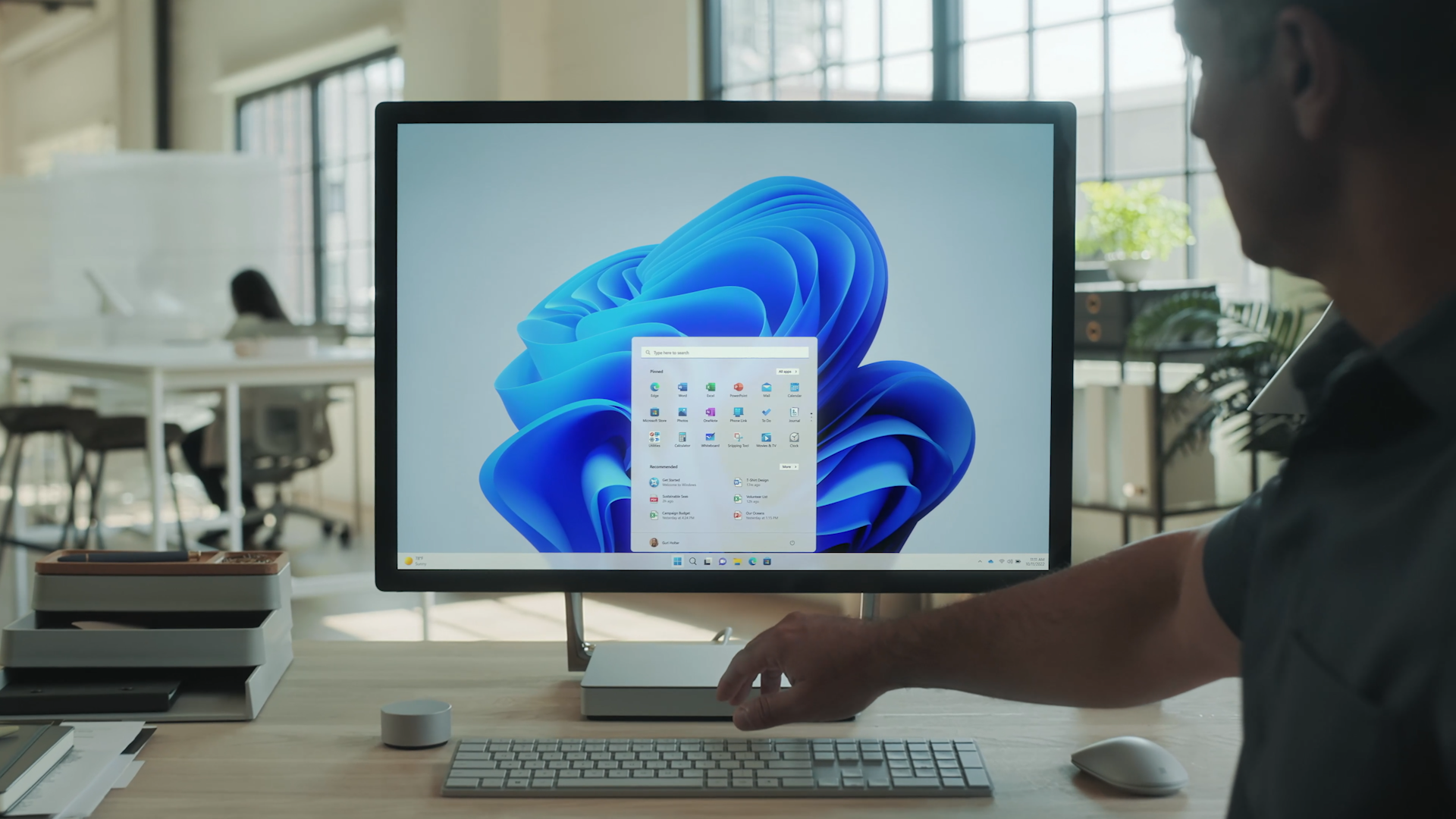The future of AI isn’t just in the office—it’s on the job site
AI could create economic mobility for essential frontline workers—here’s how product makers can shift our thinking to encompass those experiences

The conversation around AI often centers on its disruptive potential for white-collar jobs—knowledge work, office productivity, creative tasks—but less discussed is how AI might radically reshape skilled labor and frontline work. As designers, taking a humanity-centered lens means continuously exploring new territory, not just technologically but from a human perspective.
Today, we have a remarkable track record of empowering Information Workers, a legacy that we’re actively building on as we enter the AI era. As we look to the future, I also see great potential for AI-first experiences that help create economic growth and mobility for the people supporting society’s most essential systems. Building and maintaining our physical systems are electricians, ironworkers, pipefitters, transportation workers, and more. Supporting our human systems are vital workers like educators, childcare providers, and nurses. Critically, almost all of these professions have high staffing shortages and dwindling pools of job applicants.
Thoughtfully designed AI experiences might help meaningfully address this, particularly when part of a holistic approach. As we expand our thinking on the product side, Microsoft Elevate and the AI Economy Institute—our next chapter for corporate philanthropy—are helping ensure people aren’t left behind as AI transforms our world. Their efforts to equip people with skills, knowledge, and tools to thrive with AI reflect Microsoft’s belief that AI should serve everyone, with inclusive design and inclusive opportunity going hand in hand.
The surprising future of AI growth: Frontline Workers
There’s a form for that! Reducing bureaucratic complexity
AI systems require massive physical infrastructure, and as we build ever-larger AI systems and data centers, energy demands skyrocket. Who meets that demand? Skilled labor: electricians wiring facilities, pipefitters building cooling systems, ironworkers erecting the structures that hold people’s digital dreams.
Yet, paradoxically, America faces a shortage of skilled electricians precisely when demand for their expertise has never been greater.
There’s urgency in needing to attract high school graduates directly into paid apprenticeships—promising stable, lucrative careers without the burden of student loans. This need points to a clear and powerful use case for AI design: streamlining complex pathways from school to apprenticeship to journeyman. AI-powered solutions could simplify processes, timelines, forms, and certifications, enabling career acceleration and economic mobility in ways that benefit individuals, families, and the economy at large.
AI as an active partner, not just another passive tool
Imagine you’re a new apprentice electrician stepping onto your first complex job site. Journeymen are there, working hard and keeping the project moving, but the pace of the job can make it tough to stop and walk through every question in real time. That’s where AI steps in—not to replace the guidance of experienced electricians, but to support it. Using your smartphone, an AI assistant can visually recognize issues and offer instant, practical advice based on thousands of real-world scenarios handled by seasoned journeymen. It’s like having an extra layer of support in your pocket—AI as a hands-on helper that reinforces learning and builds confidence on the job.
This isn’t theoretical futurism. It’s practical, scalable AI design that could directly enhance frontline productivity, accelerate learning, elevate effectiveness, and better ensure safety. Front-line workers’ jobs are often physically demanding, sometimes dangerous, and can include 10-12 hour shifts in unpredictable settings—in the U.S. alone, nearly 1 million manufacturing injuries and truck crashes happen annually. That doesn’t just disrupt on-the-job productivity; a back injury or missing fingers can create persistent economic hardships for entire families.
In that context, knowing that you’re not alone isn’t just about boosting confidence and helping you excel at work; it’s trusting you’ll get home safely after your shift.
Rebuilding trust with human-centered AI design
Beyond personal safety, trust is a key factor in another aspect of frontline work: the benefits and promises of technology. Nurses, for example, are understandably skeptical of digital technologies based on their past experiences. Two decades ago, they were promised that Electronic Medical Records (EMRs) would transform their workflow positively. Instead, EMRs primarily benefited administrators, insurers, and technology vendors—leaving nurses burdened with additional complexities, reduced face-to-face patient interaction, and diminished trust in technological promises.
Today, that skepticism lingers, fueled by a perception that technology often prioritizes corporate efficiency or profitability above the real-world needs of frontline workers. Nurses and many other skilled professionals rightly wonder if AI will truly support them or if history is poised to repeat itself. The future success of AI will not merely depend on impressive technological capabilities, but on our ability to regain and sustain trust, especially among those previously let down by technological promises.
The only viable solution to this skepticism is genuine human-centered product design.
The path forward involves carefully listening to frontline workers, deeply understanding their everyday problems, and co-designing solutions that deliver tangible benefits. Good design, genuinely rooted in user empathy and real-world utility, doesn’t pit business objectives against workers’ needs—instead, it aligns and balances both effectively. As product makers, our job is to strike that balance, ensuring AI tools are not forced onto workers for technology’s sake, but developed collaboratively, transparently, and empathetically.
The next wave of product design
Thinking differently about the “Job” to be Done
To deliver on that promise, we need to reframe our design approaches and assumptions. Take Jobs to be Done (JTBD), a common design framework for understanding user problems. Historically, we’ve conceived of “jobs” as more literal actions, typically through the lens of IWs. Empowering all workers with AI will take looking beyond surface behaviors and toward human needs typically higher up Maslow’s hierarchy.
Consider annual performance reviews, which happen whether you’re a delivery driver or a designer. Typically, employees fill out a form that managers then use for career conversations. If we think the JTBD is “fill out a form,” we will design an AI solution that makes completing forms easier; perhaps you brain dump thoughts into the form and AI gives them structure and nicer verbiage. If we’re aware the real JTBD is facilitating meaningful conversation, we could design a proactive AI agent to embed into daily workflows, preparing you and your supervisor weeks ahead of your career convo. The agent helps synthesize your achievements (including ones you may have forgotten about), surfaces relevant feedback, suggests productive talking points, and then facilitates an engaging conversation—all significantly more efficient, meaningful, and less transactional.
This kind of design centers on an end-user’s needs first, versus creating technological solutions for the sake of it. While product makers regularly engage with skilled laborers or FLWs—your kid’s teacher, the nurse at your doctor’s office, that plumber you just desperately called—the nature of our work is so drastically different that it’s especially important to co-design to identify the deeper needs beneath the task.
Prioritizing multimodal scenarios differently
While multimodal scenarios are exciting for many IWs, they make a far more critical difference to frontline workers. Visually capturing whiteboard notes has different stakes than signaling to a trucker driving through sleet that there’s oncoming traffic. Vision-centered input and output experiences designed for transportation workers will invariably be incredibly sensitive, detailed, and accurate—resulting in an experience that is markedly better for FLWs and IWs alike.
From a design P.O.V., a more robust spectrum of human activities happens within frontline roles given their highly physical and conversational nature. While all professional sectors propel the economy and matter deeply, failing to meet the needs of frontline workers has immediate effects keenly felt across all strata of society. By applying universal design principles to multimodal solutions for these more extreme and critical states, we’re creating experiences that will benefit everyone.
Transforming end-to-end workflows
AI’s broader potential is not just automating tasks but actively empowering people, creating entirely new pathways and new ways of working. This potential reaches far beyond offices and into classrooms, hospitals, construction sites, transportation systems, and more.
Educators we spoke with, for example, already see AI deeply embedded in their classrooms, driven initially by student adoption, but now transforming how they create and teach curriculum.
Nurses and healthcare workers are similarly leveraging AI to manage patient care more effectively.
Microsoft’s vision for tools like Microsoft 365 Copilot is grounded in this new reality: designing intelligent systems that understand, anticipate, and adapt to human needs in real-time. As we reimagine entire experiences, part of co-design is reconsidering how productivity is measured, defined, and enabled through intelligent design. By not using AI to automate current tasks, but fundamentally reconsidering the tasks themselves, we can prioritize what matters most: human connection, rapid learning, economic empowerment, and meaningful work.
A new kind of end-to-end thinking
End-to-end experiences typically refer to the entire product lifecycle. As we think about the world within which our products will live, a different kind of end-to-end thinking is needed. The education sector often employs a “cradle to career” mindset when thinking holistically about economic growth. Rather than just focusing on the jobs at the end of the educational tunnel, the discussion starts with early childhood learning, then goes into K-12 and postsecondary pathways inclusive of higher ed and paid apprenticeships, and then onto living-wage jobs.
Considering the severe staffing shortages among these most vital roles, product makers’ end-to-end thinking should include sparking conversations about how to best move people toward these professions. Data rich platforms like LinkedIn could make frontline career pathways more visible and navigable by surfacing in-demand roles, mapping out skills-based pathways, and connecting aspiring workers—whether high school students or career switchers—with apprenticeship programs, certifications, and mentors. By integrating these insights into product design, we could holistically support essential professions with new end-to-end thinking.
Ultimately, the next generation of AI isn’t just digital; it’s tangible, interactive, proactive, and deeply human. For AI designers and product creators, our mission has never been clearer: redefine productivity broadly, deeply, and humanely. At Microsoft, this is our commitment—to continuously evolve how we think about and build the world’s most impactful AI tools, ensuring that everyone, from electricians and educators to designers and business leaders, thrives in this new reality.
Read more
To stay in the know with Microsoft Design, follow us on Twitter and Instagram, or join our Windows or Office Insider program. And if you are interested in working with us at Microsoft, head over to aka.ms/DesignCareers.

Outcomes over output: Designing shared cognition
How we are shaping systems that help people think better, not just type faster.

The new Microsoft 365 Copilot mobile experience
How we redesigned the Microsoft 365 Copilot mobile app to create a workspace built around conversation, dialogue, and discovery.

Windows 11 design principles + tenets
Our guiding force behind designing Windows for the AI era
